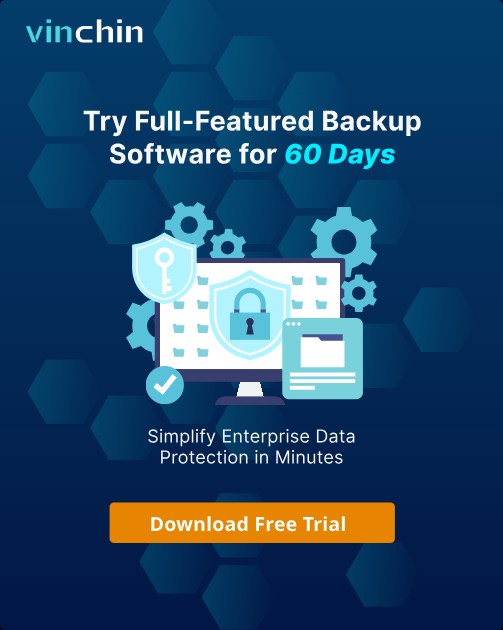-
Type-1 hypervisor vs Type-2 hypervisor
-
What is VMware?
-
What is KVM?
-
Deployment Requirement
-
Usability
-
Scalability
-
Security
-
Cost
-
Always Back up Your Virtual Machines
-
VMware vs KVM hypervisor FAQs
-
Conculsion
Hypervisor can be seen as the concrete in the process of building a virtual environment. There are many hypervisors that you can choose in today’s virtualization market, which all work in their own way to help drive the best performance of limited hardware resources.
VMware and KVM are two very popular virtualizations among all, and with different highlight features involved, organizations often choose either of them for more flexible business operations. In this blog, we’re going to make a brief introduction and comparison of VMware and KVM.
Type-1 hypervisor vs Type-2 hypervisor
Before we begin, let’s talk about their hypervisor type first. All available hypervisors now on the market can all be divided into 2 types: type-1 hypervisor and type-2 hypervisor.
Type-1 hypervisor
Type-1 hypervisor is also called bare-metal hypervisor, which directly runs on hardware without host OS needed. Commonly used hypervisors like VMware ESXi, KVM, Citrix Xen and Hyper-V are all type-1 hypervisors.
Type-2 hypervisor
Not like type-1 hypervisor that can directly interact with the hardware resources, type-2 hypervisor needs host OS to be the intermediary between itself and hardware, which means it runs on an installed host OS. Popular type-2 hypervisor includes VMware Workstation, Oracle VirtualBox, and Microsoft Virtual PC.
Typically, type-1 hypervisor is a preferred choice for enterprise-grade system admins, due to its direct access to hardware resources, while type-2 hypervisor is often used in home labs and testing environments.
What is VMware?
When we talk about VMware in the field of enterprise-grade virtualization, it often refers to VMware vSphere, the complete suite that contains different components to help enterprise users achieve both basic and advanced virtualization management.
One included component is ESXi, the hypervisor that gets a virtual machine up running. It is a hypervisor that's self developed by VMware, which can be directly installed on the physical server.
vSphere is offered with both Free and Commercial editions, but like any other vendor, free edition can only be used for a very small IT environment because the supported features and manageable VMs have strict limitations. To build a real business-grade VMware infrastructure is better to get a paid license.
What is KVM?
KVM (Kernel-based Virtual Machine) runs on hosted Linux OS. It means that to use KVM you need to install a Linux OS as the host OS first. The reason why it’s still a type-1 hypervisor is that it works to convert the host OS into hypervisor with loaded kernel modules like kvm.ko, kvm-intel.ko, and kvm-intel.ko.
KVM is an open-source hypervisor, which means it is free for use and do not require license. You can enjoy full features at once, but for further technical support, you need to contact Linux OS vendors, because KVM does not offer direct support.
Deployment Requirement
VMware ESXi is a little bit picky on the hardware since it owns a specified hardware compatibility list. If you want to deploy ESXi on the existing server, you need to check if the server meets the installation requirement first, which brings a bit inconvenience especially for companies who want to do an overall infrastructure upgrade.
Compared with VMware ESXi, KVM has higher flexibility when it comes to deployment. As long as you have AMD-V or Intel VT processors, you can install KVM without worries. This gives much more freedom for users on the choices of hardware.
Usability
Due to KVM’s well integration with other platforms, you can enjoy a lot more features than almost all the other hypervisors. But on the other side, it does not include a very intuitive management interface as VMware does, so it requires more command-line-based operation skills.
But do not misapprehend that VMware provides not enough features. The high maturity of VMware product ecosystem also allows it to offer almost all features that help you solve potential issues during daily business operation, and it’s easier to manage and control with vCenter. The only thing you need to consider is how to make a mixed solution that suits your IT environment most.
Scalability
Both VMware and KVM can scale to meet users’ business growth, and few issues were there no matter which one you choose. VMware allows user to add at most 64 hosts per cluster, with each can be loaded with at most 12 TB of RAM. But again the hardware part needs to be carefully considered. In a contrast, KVM provides more freedom on scaling infrastructure.
Security
VMware always puts emphasis on the protection of VMs. It has a complete set of features like Secure Boot, VM Encryption, and utility suite the VMware Tools to guarantee the safety of your critical workloads running on VMs. VMware also makes effort to help enterprise-grade users comply with legal regulations like HIPAA.
As we mention above, KVM itself does not offer support but the Linux OS vendors do. So the security level of KVM relies on what the technologies the vendor apply. For example, the security-enhanced Linux (SELinux) and secure virtualization (sVirt) provided by Red Hat can be used for enhance the security and isolation of virtual machines.
Cost
From this aspect KVM no doubt outperforms VMware every time. Since it is open source, the total cost of ownership can be much lower, which can be one of the most suitable solutions for start-up and small companies build business infrastructure in the virtualization world.
The licensing models of VMware commercial editions can be costly, due to its comprehensive support and high-performance availability features, which seems to be a better choice for enterprises who have enough budget and chase for effortless large-scale virtualization environment management.
Always Back up Your Virtual Machines
Also, don't forget that data protection is always important. No matter it’s the VMware or KVM hypervisor you choose in the end, you can always use Vinchin Backup & Recovery to easily protect your business-critical data saved in VMs. It’s fully compatible with VMware and most mainstream KVM-based virtual platforms including Proxmox, oVirt, Red Hat Virtualization, Oracle Linux Virtualization Manager, and Huawei FusionCompute (KVM). Besides incremental, CBT/CBT alternative driven VM backup, the software also supports file-level granular restore, instant restore, V2V (cross-platform recovery), and a bunch of other effective and advanced features.
It only takes 4 steps for you to backup VMs, here will show you how to backup VMware VM with Vinchin Backup & Recovery:
1. Select the backup object.
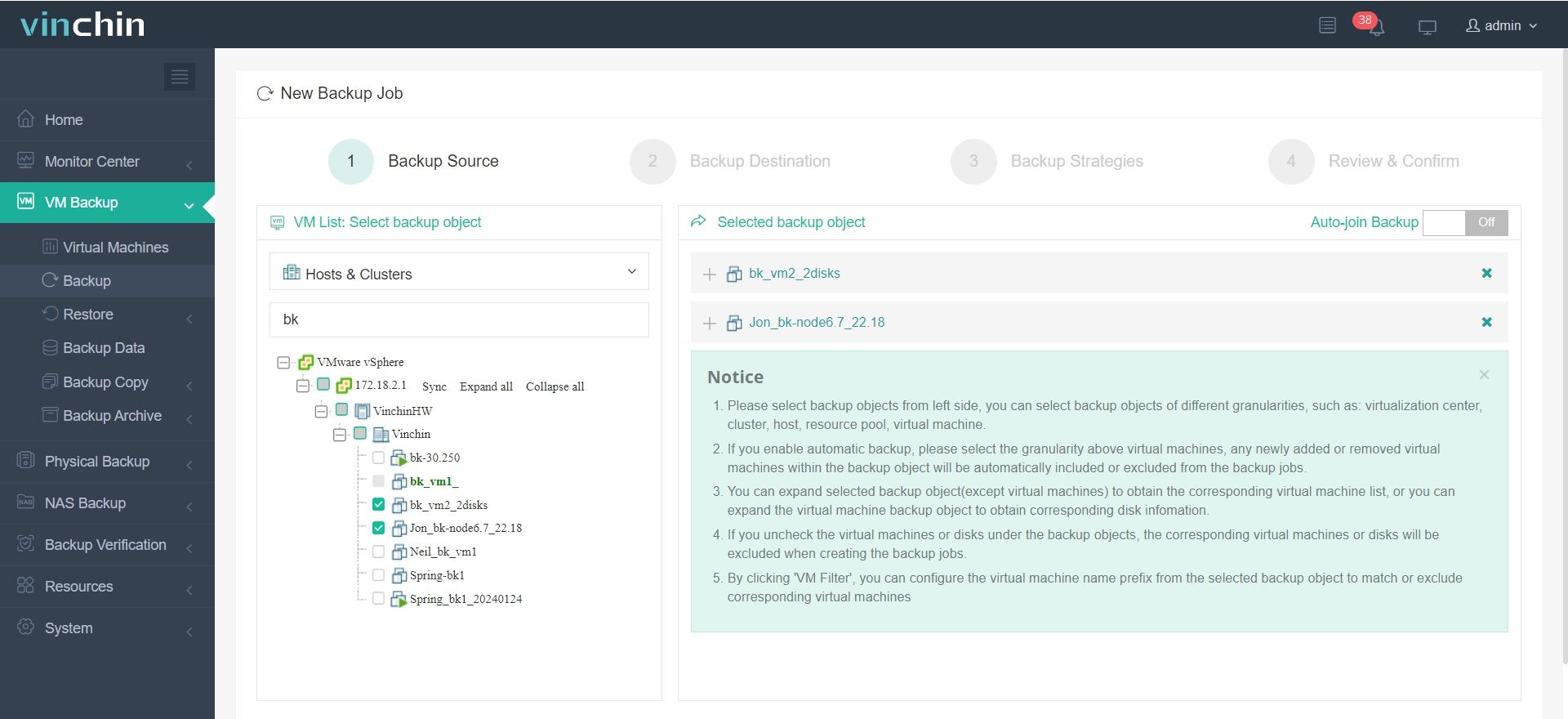
2. Select backup destination.
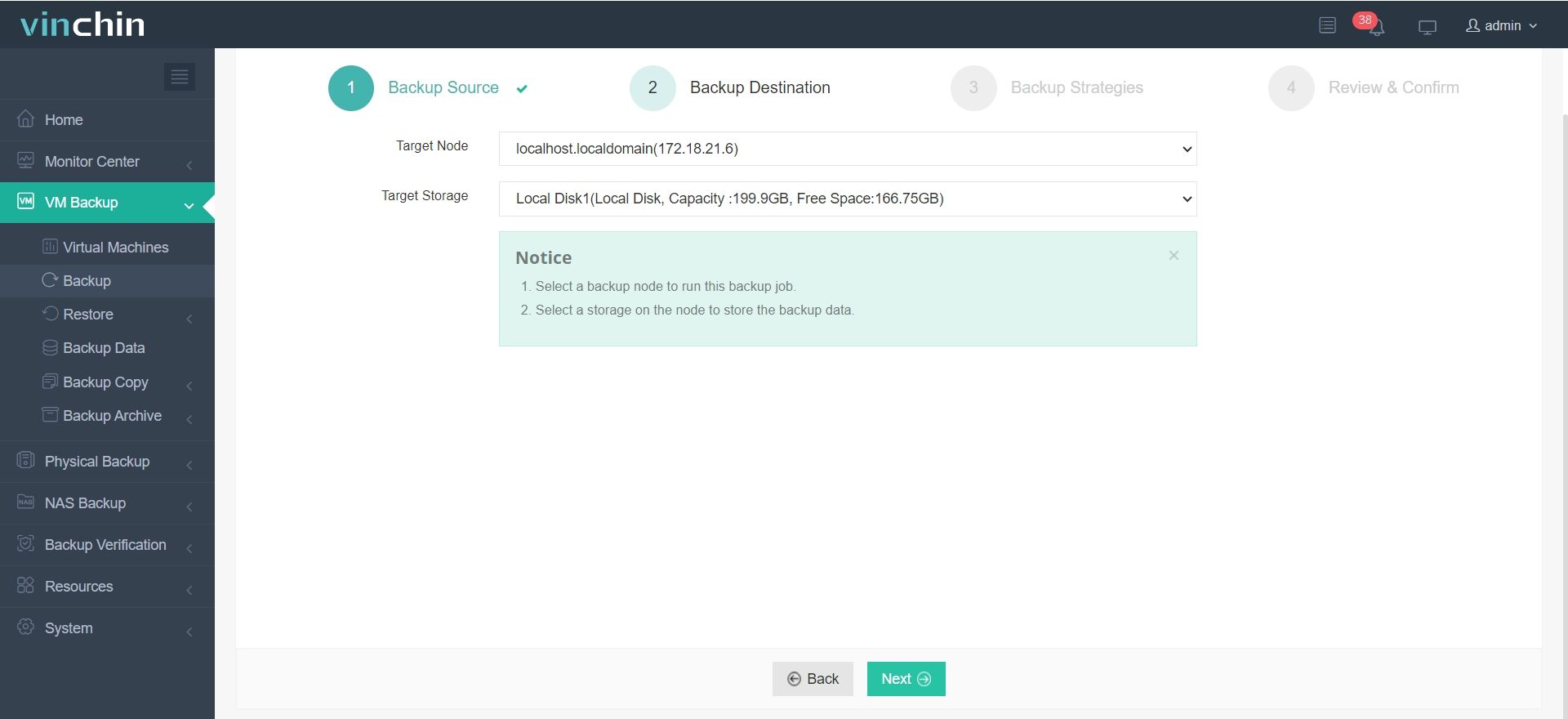
3. Configure backup strategies.
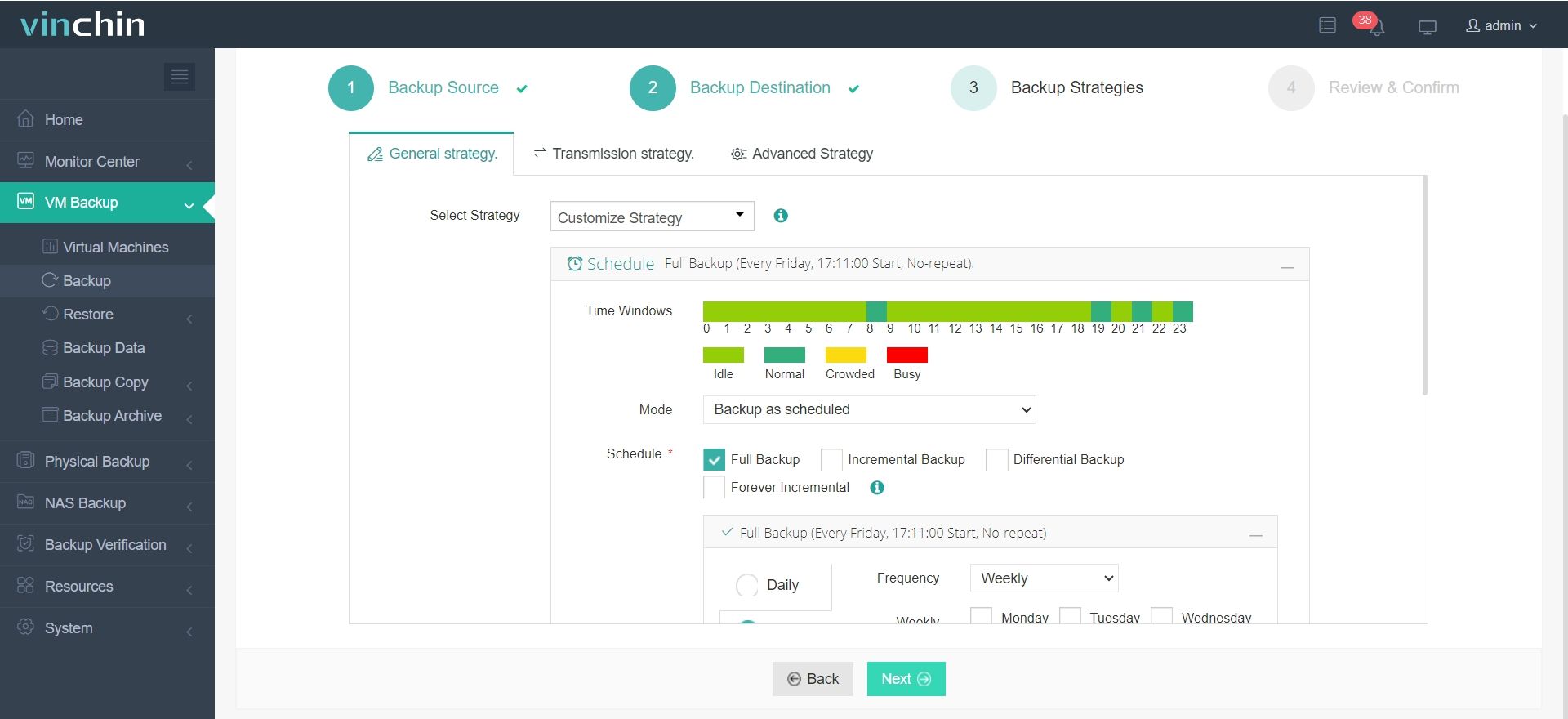
4. Review and submit the job.
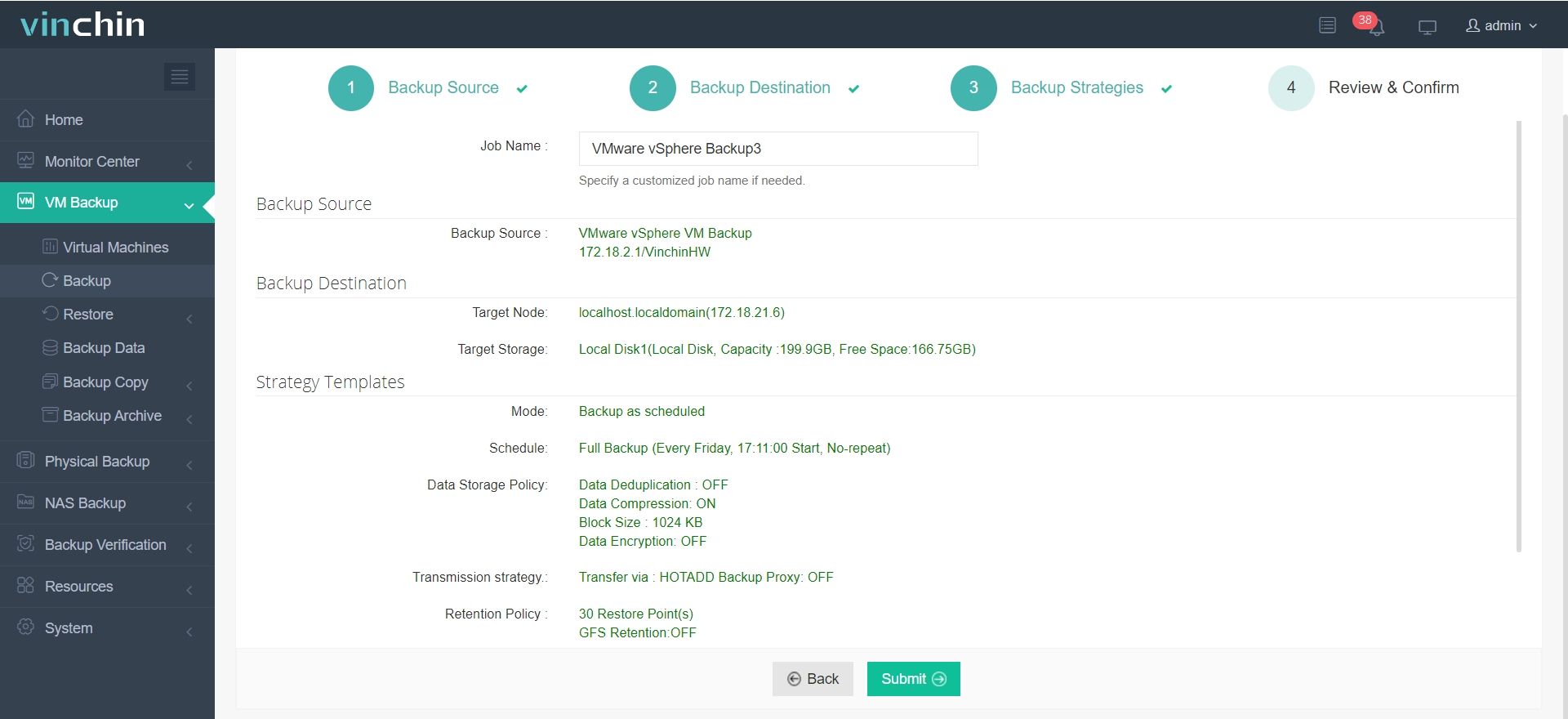
Vinchin Backup & Recovery has been selected by thousands of companies and you can also start to use this powerful system with a 60-day full-featured trial! Also, contact us and leave your needs, and then you will receive a solution according to your IT environment.
VMware vs KVM hypervisor FAQs
1. Q: Can VMware ESXi and KVM co-exist on the same network?
A: Yes, VMware ESXi and KVM can co-exist on the same network. They can manage VMs independently, and with proper configuration, VMs from both hypervisors can communicate with each other.
2. Q: How do VMware ESXi and KVM handle VM migration?
A: VMware ESXi supports live migration with vMotion, allowing VMs to be moved between hosts without downtime. KVM also supports live migration, but the process might be more complex to set up compared to ESXi. If you want migrate VMs cross platforms, Vinchin is a perfect choice!
Conculsion
Both VMware ESXi and KVM are two powerful hypervisors to help you start virtualization journey. When making the final decision, you should take actual operation needs and deployment budget into consideration: If you want a cost-effective, highly scalable solution that allows you to build a customizable virtual environment, KVM would be excellent; If you have enough budget, and also chase for high availability of business, simple and more cutting-edge management of massive VMs, VMware may be a better choice.
Share on:





